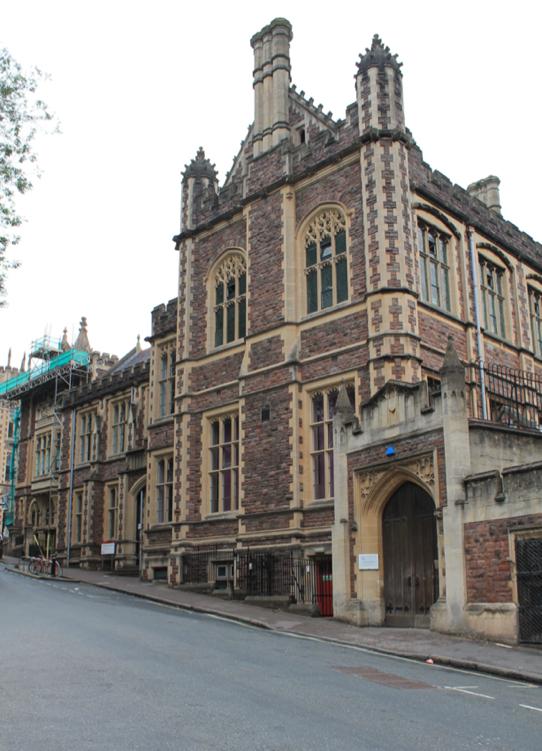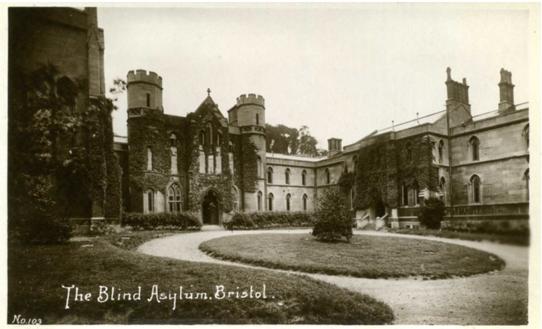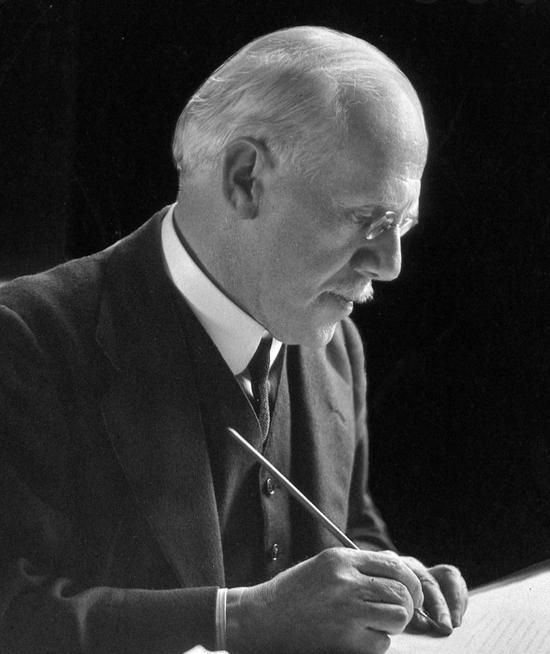
4 minute read
WHERE THE HELL is Bristol Medical School?
hell is Bristol Medical School? Where the
The internet isn't sure - it gives a list of places with 'Bristol Medical School' in the name, but these are just buildings some people from the faculty use from time to time. Someone's office, an admin room, a filing cabinet, but not the medical school. Look at images of Cardiff, UCL, Barts; they all have buildings, new and old, but definitely medical schools. They're large, imposing structures which project a confident, professional image of medical education. Ours is a fairly unique situation to be in. We have an unusual course which takes us not just all over Bristol but all over the South West. In a single day you might spend a morning in a GP in Gloucester, followed by an afternoon tutorial on St Michael's Hill looking out over Bristol, then to a random sub-society at a far-away leisure centre or pub. Different furniture, different buildings, different cities. If you're familiar with the history of the medical school, you'll know it's a surprisingly interesting, rich and nuanced story. It goes some way to explain the situation we all find ourselves in today. Our story started in 1737, and it wasn't until 1892 that an actual Medical School was built - in those 155 interim years, there was a sporadic mixture of teaching: lectures given in people's houses, an anatomy lab built where the College Green Cathedral pulpit now stands. Random internships were offered in the various hospitals, infirmaries and psychiatric hospitals in and around Bristol, and due to the lack of Royal College exams for many years (and the unofficial nature of a medical education in past centuries), it just went on in this patch-work fashion for decades and decades. That 1892 building is now the Department of Geography; you can see the motto of the RCP above the entrance, translated by Chaucer as 'The life so short, the craft so long to learn'. The medical library was forced to move in 1911 because the University wanted to use it as a Council Chamber and Senate Room, and as years went by, more and more of the building was used by other parts of the University, and the Medical School was gradually pushed out. The medical library went to the basement of the 'Bristol Royal School and Workshops for the Blind' for four years – this was an institution which taught blind people skills they could use for paid work. The library then was moved to the racquet court of the Drill Hall until 1925, and then went underneath the main library in Wills, and finally ended up where it is now. What a mess.
Advertisement

In 1919 the Board of Education sent a man called Sir George Newman, (the Medical Secretary) to check Bristol out. In a meeting, he said Bristol might have a medical school which "was great in tradition and in the length of its history, but it was not great in all respects... it was" he said "all at sixes and sevens". The man had a point - take our placements; until 1922 if you wanted to do this clinical work as a medical student you paid the hospital, not the university, with money split between the hospital staff. Predictably, this created competition between different hospitals to attract medical students. Eventually it was decided that students should pay tuition to the university, and staff could take on part-time temporary teaching roles at the university, which is essentially how it's done today. There were attempts made at collating the many parts of the medical school into one big university hospital, but this never happened despite funding being made available by Henry Wills. Hospital politics got in the way, and nothing much has changed. There are multiple University Hospitals, and we now take part in placements across the Southwest. There is no set building, no set list of staff, no set placements. We will end up being taught practically anywhere, by anyone, at any time over the course of 5 years, but somehow, we all come out the other end as competent Doctors. That's pretty cool if you ask me. Ours is a medical school that works via Outlook, blackboard collaborate, and MyBristol. Tutors come from a range of departments and careers; everyone does something else - teaching medical school is a side-hustle. They give up their time, and we see them regularly for a few weeks, months, or years, and then we vanish from each other's timetables. Ships passing in the night, tourists in each other's lives. Nothing may seem particularly permanent at Bristol Medical School, but that which is permanent cannot be seen. It's the precious knowledge we attain, the relationships we build, and the experiences we gain that will last lifetimes, not bricks and mortar. And we wouldn't have it any other way.
Written by Max Gerard.







